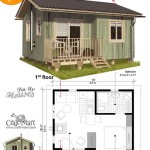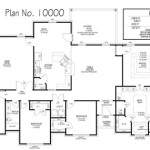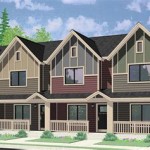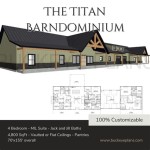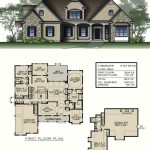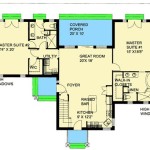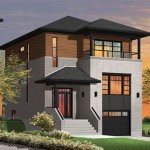Lake House Plans for Narrow Lots: Maximizing Space and Views
Designing a lake house on a narrow lot presents unique challenges and opportunities. The constraints of limited width require careful planning to optimize living space, capture picturesque lake views, and maintain a comfortable and functional environment. Successful lake house plans for narrow lots focus on verticality, strategic window placement, and clever spatial arrangement. This article explores key considerations and design principles relevant to creating a desirable lakefront property within the confines of a narrow plot.
The appeal of a lake house often lies in its connection to nature and the tranquility it provides. However, a narrow lot might initially seem to restrict the ability to fully enjoy these benefits. Through thoughtful architectural design, it is possible to overcome these limitations and create a stunning lake house that feels spacious, inviting, and perfectly integrated with its surroundings. The following sections will delve into specific strategies for achieving this goal.
Prioritizing Vertical Design and Multi-Level Living
One of the most effective strategies for maximizing space on a narrow lot is to build vertically. Instead of a sprawling single-story structure, consider a multi-level design. This allows for a greater total square footage without increasing the footprint of the house. A two-story or even three-story home can provide ample room for living areas, bedrooms, and recreational spaces. Furthermore, upper levels often offer enhanced views of the lake, which can significantly improve the overall living experience.
When designing a multi-level lake house, careful attention must be paid to the placement and design of staircases. Staircases not only serve a functional purpose but can also be integrated as design elements that enhance the aesthetic appeal of the home. Consider open staircases with minimal risers to allow natural light to flow freely between floors. Creative use of materials like wood and metal can add visual interest and complement the overall design theme. Alternatively, consider a spiral staircase to save space but be mindful of building codes and usability for all occupants.
Elevators or lifts are another option to consider, especially for multi-generational families or those planning to age in place. While they require more space and expense upfront, they can significantly improve accessibility and long-term livability. Consider the placement of the elevator during the initial design phase to minimize disruption to the floor plan.
Beyond the number of floors, interior space planning within each level is crucial. Open-concept designs are particularly well-suited for narrow lots, as they create a sense of spaciousness and allow for better flow between different living areas. Combining the kitchen, dining area, and living room into a single open space can make the home feel much larger than it actually is. Strategic placement of furniture and the use of area rugs can help define different zones within the open space.
Another space-saving strategy is to incorporate built-in storage. Custom cabinetry, shelving units, and window seats that offer storage underneath can maximize utility without sacrificing floor space. Consider using vertical space for storage, such as floor-to-ceiling bookshelves or pantry cabinets.
Optimizing Natural Light and Lake Views
Given the constraints of a narrow lot, maximizing natural light and capturing lake views becomes paramount. Strategic window placement is key to achieving this goal. Consider using large windows or glass doors on the lake-facing side of the house to provide unobstructed views and allow ample sunlight to enter. Floor-to-ceiling windows or sliding glass doors that lead to a deck or patio can create a seamless connection between the indoor and outdoor spaces.
Skylights and clerestory windows can be used to bring natural light into areas that might otherwise be dark, such as hallways or interior rooms. These types of windows can also help to reduce the need for artificial lighting during the day, which can save energy. The positioning of these windows should consider solar orientation and potential glare.
The orientation of the house on the lot is another important factor to consider. Ideally, the main living spaces should be oriented towards the lake to maximize views and natural light. However, it is also important to consider the direction of the sun and the prevailing winds. Overhangs and awnings can be used to provide shade during the hottest parts of the day, while strategically placed trees can help to block strong winds.
Window treatments can also play a role in optimizing natural light and views. Sheer curtains or blinds can allow light to enter while still providing some privacy. Avoid heavy drapes or blinds that block too much light. Consider automated window coverings that can be adjusted remotely to control the amount of sunlight entering the home.
The use of reflective surfaces can also help to maximize natural light. Light-colored walls and ceilings will reflect light more effectively than dark colors, making the space feel brighter and more open. Mirrors can also be used to create the illusion of more space and reflect light into dark corners.
Designing Functional Outdoor Spaces
A well-designed outdoor space is an integral part of any lake house, regardless of the size of the lot. On a narrow lot, it is especially important to make the most of the available outdoor space. Decks, patios, and balconies can extend the living area of the house and provide space for relaxation, dining, and entertaining. These spaces should be designed to complement the architecture of the house and to take advantage of the lake views.
Vertical landscaping can be used to create privacy and add visual interest to outdoor spaces. Planting climbing vines on trellises or walls can create a lush green backdrop that screens the area from neighbors. Container gardens can also be used to add color and texture to decks and patios. Carefully selected trees and shrubs can provide shade and create a more secluded environment.
Consider incorporating outdoor cooking and dining areas into the design. An outdoor kitchen with a built-in grill, sink, and countertop can make it easy to prepare meals and entertain guests. A dining table and chairs can provide a comfortable space for al fresco dining.
If the lot has direct access to the lake, consider building a dock or pier. This will provide a place to moor boats, fish, and swim. A boat house or storage shed can be used to store boating equipment and other outdoor gear. Ensure compliance with local regulations and building codes when constructing any structures on the waterfront.
Outdoor lighting can enhance the ambiance of the outdoor space and make it more usable after dark. String lights, lanterns, and spotlights can be used to create a warm and inviting atmosphere. Path lighting can improve safety and visibility. Consider using solar-powered lights to conserve energy.
When designing the outdoor space, it is important to consider the maintenance requirements. Choose materials that are durable and easy to clean. Consider using native plants that are well-suited to the local climate and require minimal watering and fertilization. Mulch can be used to suppress weeds and retain moisture in the soil.
In addition to these considerations, local building codes and regulations will play a significant role in the design and construction of a lake house on a narrow lot. Setback requirements, height restrictions, and environmental regulations must be carefully considered to ensure compliance. Consulting with a qualified architect or builder who is familiar with local regulations is highly recommended.
In conclusion, designing lake house plans for narrow lots requires a careful balance of space optimization, view maximization, and functional outdoor living. By prioritizing vertical design, strategic window placement, and thoughtful spatial arrangement, it is possible to create a desirable lakefront property that feels spacious, inviting, and perfectly integrated with its surroundings.

Open Concept Small Lake House Plans Houseplans Blog Com

Small Cosy Homes Narrow Lot House Plans Mediterranean Style Lake

Luxe Lake House Plans From Visbeen Architects Houseplans Blog Com

Narrow Lot Lake House An Ideabook By Bcfry

Narrow Lot House Plan For Lake Lots Max Fulbright Designs

Aaron S Beach House Coastal Plans From Home

House Plans For Narrow Lots On Waterfront Lake Small Houses Lot

2 Story House Plans For Narrow Lots Blog Builderhouseplans Com

Narrow Lot Lake House Floor Plans

Open Concept Small Lake House Plans Houseplans Blog Com


